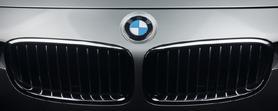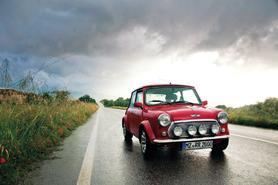Analysis: The shape of the future?
As we reach the end of the CJEU’s supremacy in the UK, Dan Bailey reflects on whether INEOS has altered the road ahead for automotive trade mark rights

On 3rd August 2020, the High Court of England and Wales upheld INEOS Automotive Ltd’s (INEOS) oppositions against Jaguar Land Rover Ltd’s (JLR) most recent attempts to protect the shape of its iconic Defender 90 and Defender 110 models as UK trade marks.1
This widely reported decision has caught the attention of the Trade Mark Attorney community because it adds further fuel to the contention that brand owners will continue to face rough terrain when it comes to protecting and maintaining shape marks both in the automotive industry and more broadly.
JLR’s applications in brief

In late 2013, JLR announced that it would cease production of the Defender, having produced more than two million examples of the model since 1948. Following this announcement, INEOS – led by British billionaire and Defender aficionado Jim Ratcliffe – offered to purchase the tooling and production equipment from JLR in order to continue manufacturing the vehicle. JLR turned this offer down. INEOS then announced the development of its own “truly functional off-roader” in early 2016.
Following that announcement, JLR filed four UK trade mark applications for the shape of the Defender 90 and 110 vehicles in classes 9, 12, 14, 28 and 37. These applications were for the Defender 90 and 110 with and without spare wheels.
On this initial attempt, the applications were refused by the UK IPO on the basis that they were considered to be “descriptive of a sports utility vehicle… and devoid of any inherent distinctive character”. However, JLR later submitted further evidence of acquired distinctiveness based on the long-standing use of the Marks, which secured acceptance of the applications and publication. This resulted in an opposition by INEOS on a number of grounds, including:
- s3(1)(b) and (c) of the Trade Marks Act 1994, that the Marks are descriptive of the goods/services or otherwise devoid of any distinctive character;
- s3(1)(d), that the Marks consist of signs that have become customary in the bona fide and established practice of the trade in the goods/services at issue;
- s3(2), that the shapes are necessary to achieve a technical result and/or give substantial value to the goods; and
- s3(6), that the applications were filed in bad faith.
The opposition decision

The Hearing Officer (HO) acknowledged that the Marks have some unusual design aspects (eg, the “arrow shot” rear windows and alpine-side windows). However, in applying the criteria from London Taxi2, he went on to find that the shapes as a whole did not depart significantly from the norms and customs of the passenger car sector and, therefore, were not inherently distinctive.
Moving on to acquired distinctiveness, the HO considered the factors in Windsurfing Chiemsee3, including: reviewing the market share; considering the amount spent on promoting the Defender models; and the public recognition of the Marks. In support of the final point, JLR submitted survey evidence showing that somewhere between 20 and 40 per cent of 500 people shown the Marks were confident that the pictures were of a Land Rover Defender, with around 10 per cent of respondents referring to Jeep. However, the HO held that this survey response did not show anything beyond mere recognition and did not indicate that the Marks act as a badge of origin. The HO therefore held that the Marks had not acquired distinctiveness.
JLR appealed to the High Court, claiming that the HO had incorrectly assessed inherent distinctive character and acquired distinctiveness. In relation to the inherent distinctiveness of the Marks, Her Honour Judge Clarke was satisfied that the HO made no material error in law or that their findings were wrong.
The Court then addressed whether the Marks had acquired distinctiveness. In particular, JLR objected to how the HO evaluated the survey evidence and the manner in which it assessed the evidence of Defender modifiers.
The appeal decision helpfully restates the current position regarding surveys and acquired distinctiveness for shape marks. Surveys have long been a thorny issue in demonstrating the distinctiveness of a trade mark, particularly due to the subjectivity of their results. The Court agreed with the HO’s assessment of the evidence and therefore held that even a high degree of recognition (as high as 40 per cent in this case) is insufficient to show that the shape alone, and not the other branding elements such as logos, is used as a badge of origin.
Turning to the “modifier” market, HHJ Clarke stated that consumers would “buy a modified vehicle because they want a Defender, but better”. The fact that a customer could buy a modified vehicle from a third party, such as (in the UK) Twisted Automotive or Overfinch, suggested that the transaction arises because of the specific modifications on offer. If a customer wanted to buy a Defender, they would buy it from JLR. As a guarantee of origin, the shape was therefore unimportant.
Auto sector implications

The INEOS decision has caught the attention of the wider public given that it relates to one of The Queen’s favourite vehicles. However, for IP professionals, it raises a question as to how automobile manufacturers can protect their designs moving forwards.
Naturally, the first port of call would be to file for registered design protection. However, this is not straightforward either. As always, the drawings to be relied on have to be carefully selected, as including too much or too little detail can assist third parties in designing around the registrations. In addition, car manufacturers often have one or more signature features that are present across all or the majority of their range (for example, the BMW grille or Porsche’s hood design). The inclusion of these recognisable elements is difficult to balance with the novelty requirements for registered designs.
Further, as manufacturers periodically redesign their existing models, this leaves scope for a “squeeze” argument (ie, that the new model is sufficiently similar to the old model, which reduces the scope of protection afforded to it).
Applications for shape marks for new car designs will likely be met with absolute grounds objections as outlined above or at least challenged on these grounds by third parties. Given the decisions of the courts in this case and in London Taxi, the vehicle design would likely have to vary quite substantially from the norms and customs of the sector to achieve registration without any use to support the application. Given the vast number of vehicles of all shapes and sizes on the market, it would take something very outlandish to avoid being caught by a s3(1)(d) objection. Perhaps a design similar to the Tesla Cybertruck would be successful. For the vast majority of automobiles, however, it is likely that the door to a shape mark is permanently closed.
And design rights won’t assist automobile manufacturers seeking to protect or extend protection for their classic designs. While it is possible, extending the protection period of a design by filing a trade mark application for a duplicate shape mark is often looked upon poorly by the courts and intellectual property offices.
Granted, a number of automobile manufacturers do own EU and/or UK trade marks for the shapes of some of their more famous vehicles. For example, VW owns registrations for its classic camper van and Beetle, Aston Martin has protected the DB5, and JLR the E-Type. Nonetheless, this decision, coupled with the decision in London Taxi, certainly looks to have ramifications for manufacturers seeking to protect/maintain protection for such shapes. The fact that consumers must not simply associate a shape with the manufacturer but also understand that a shape is exclusive to a specific manufacturer and rely on the shape to identify the origin of the vehicle is clearly a very high water mark.
Perhaps one of the only vehicles with the potential to succeed in showing that it has acquired distinctiveness is the original Mini, at least in the UK. However, given the changes in the Mini’s manufacturer and brand owner over the years, it seems unlikely that even that iconic shape is capable of acting as a reliable badge of origin.
In terms of where this decision leaves the protection of shape marks for the UK automotive industry, it is clear that obtaining protection is increasingly difficult. For those companies that already own shape mark protection in the UK, the INEOS case is a reminder that getting the application accepted isn’t the end of the story. If the registration is subject to challenge, keeping it on the register may be significantly more difficult than previously thought. The key may lie in educating the public that the particular shape of the registration originates from you and that the shape, and the shape alone, informs them of that fact. Tying this into a slick marketing message is unlikely to be straightforward.
Post-Brexit, many are expecting UK trade mark law to diverge from EU law over time. Arguably, this trend has already begun. For example, in Nestlé4, the General Court (in a decision upheld by the CJEU) found that the shape of the Kit Kat had acquired distinctiveness in the UK, despite a Court of Appeal finding that it had not.
Nonetheless, while it is perhaps easier to show that a shape mark has acquired distinctiveness in an individual EU market, the difficulty facing EU trade mark applications is the necessity of showing that the mark has acquired distinctiveness throughout the EU. As vehicles often have cult-like followings in certain countries, perhaps due to historic reasons such as their prominent role in popular culture, it may be difficult to show the required level of recognition across the entire EU, even if the threshold might be met on a country-by-country basis.
On that note, it seems fit to end by acknowledging the fact that JLR has recently filed for EU protection of the Defender 110. While this is still being examined at the time of writing, we may yet be able to make a direct comparison between the UK and EU approach.
1 [2020] EWHC 2130 (Ch), Jaguar Land Rover Ltd vs INEOS Industries Holdings Ltd
2 [2017] EWCA Civ 1729
3 C-108/97, C-109/97, 4th May 1999
4 [2016] EWHC 50






